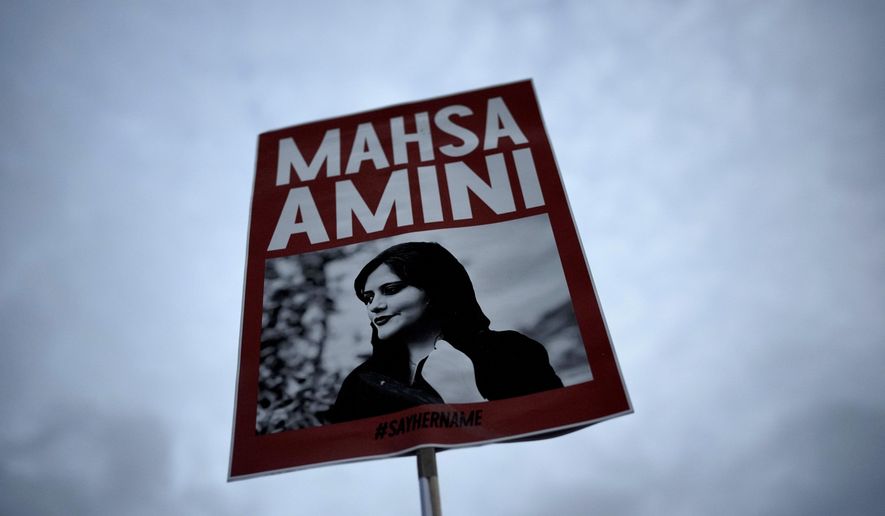OPINION:
Foreign coverage of Iran often collapses a national struggle for liberation into a single symbol: the mandatory hijab. A few clips from Tehran show unveiled women, and headlines rush to declare a thaw. Yet when Western audiences hear that the Islamic republic is “done” enforcing compulsory hijab, they hear a convenient narrative for diplomats and apologists eager to claim progress without costs.
They are hearing a lie planned by the regime in Tehran, executed by propagandists in the West and gobbled up by those who look for any excuse to cut this criminal regime a break.
Start with the law: The compulsory hijab remains on the books. Article 638 of the Islamic Penal Code still criminalizes appearing in public without a headscarf, carrying penalties of fines or jail. The parliament’s recent “chastity and hijab” initiative was designed to raise penalties and wire the bureaucracy for mass monitoring. Even as sections stalled, authorities moved ahead with “smart” enforcement via cameras, plate readers and administrative punishments.
The 2022 murder of 22-year-old Iranian woman Mahsa Amini, who was arrested and jailed for wearing the hijab “improperly,” made the morality police a global symbol of state violence. However, it didn’t lead to force reform. Rather, it dimmed the spectacle and expanded the system.
Over the past year, the Iranian regime has layered cameras, license plate readers, SMS warnings and undercover monitors onto the old toolbox of arrests and intimidation. Officials admit to deploying undercover agents in cafes and cultural venues, a form of low-visibility enforcement intended to reduce international blowback while heightening daily fear.
When that hasn’t worked, they have leaned on businesses, sealing cafes, boutiques and even office spaces to coerce compliance. In Tehran alone, authorities announced the activation of 80,000 trained personnel under a new “chastity and hijab situation room” to monitor workplaces, universities, transit and online platforms. This does not mean fewer enforcers but rather more unseen enforcers.
A video of street musicians in Tehran performing The White Stripes’ “Seven Nation Army,” surrounded by a crowd of unveiled women dancing, has recently gone viral. Many abroad hailed it as proof that “Iran has changed.” Yet days later, the Instagram pages of performers were wiped. A post on one performer’s page depicted the logo of the Police Command of the Islamic Republic, with a caption stating: “This page, equivalent to the order of the honorable judicial authority by Faraja, has been disconnected until further notice.” The regime and its cronies promote the self-serving video long enough to sell “openness” and then quietly jail the people in it.
For years, Western media amplified a convenient fiction that the regime had “moved on” from compulsory hijab. Now, some outlets are correcting the record. Agence France-Presse recently published a fact-check debunking posts circulating on Chinese social media that claimed the hijab law had been abolished, confirming that the legal requirement remains in force.
To grasp the magnitude of this control, we must widen the lens beyond the hijab. As the regime touts “tolerance” in select neighborhoods of the capital city, it is setting execution records nationwide. More than 1,300 people have been executed in Iran since January (190 in October alone), with many put to death after closed, grossly unfair trials. This is not a regime liberalizing its social policy but rather tightening every other screw.
The lie that the regime has reformed or relaxed hijab enforcement is not a mistake or misunderstanding. It originated in Tehran’s state media and is echoed in Washington by an established network of consultants, think tank fellows and lobbyists who have built careers on selling the illusion of moderation. Each time an Iranian woman walks unveiled in defiance of the law, these voices present it as proof of change rather than resistance. Their purpose is to turn the Iranian people’s defiance into a talking point for appeasement.
Treating hijab-easing as reform while ignoring a death penalty binge rewards the bait-and-switch that keeps the machinery in Tehran running. A system engineered for control will not become a guardian of rights.
Yes, in parts of the capital, you can sometimes film unveiled women without immediate confrontation. That reality reflects the Iranian people’s courage, not the regime’s mercy. It has been won by years of defiance from Iranian women and men, not granted by benevolent officials.
The struggle ends not with softer optics or selective enforcement, but when the free world treats the Iranian people’s demand for liberty as its own moral and strategic imperative.
• Andrew Ghalili is a senior policy analyst at the National Union for Democracy in Iran. Nina Khoshkish is a communications associate at NUFDI.




Please read our comment policy before commenting.